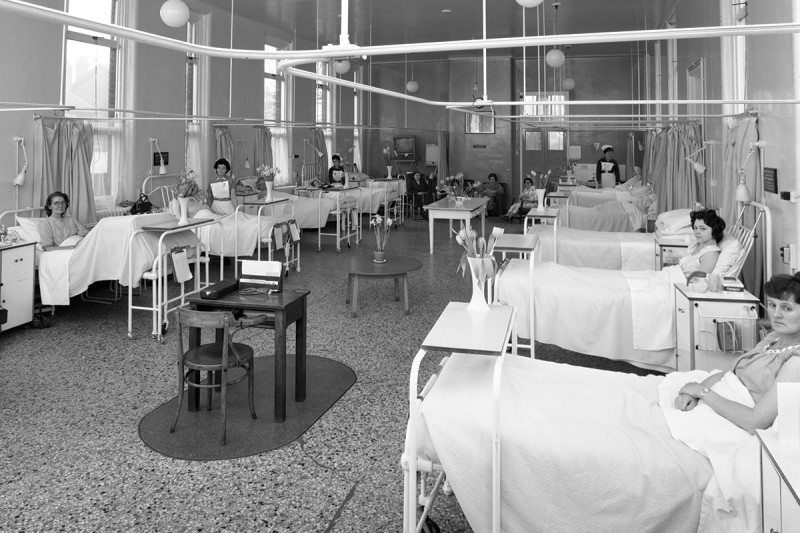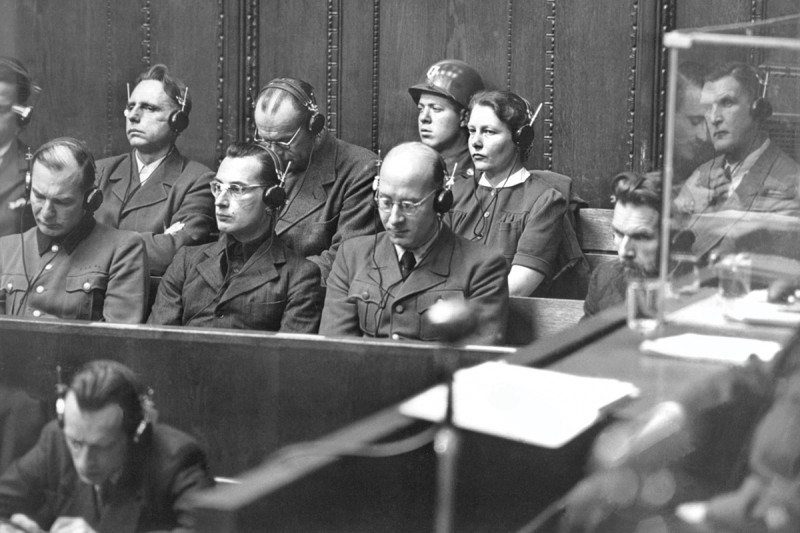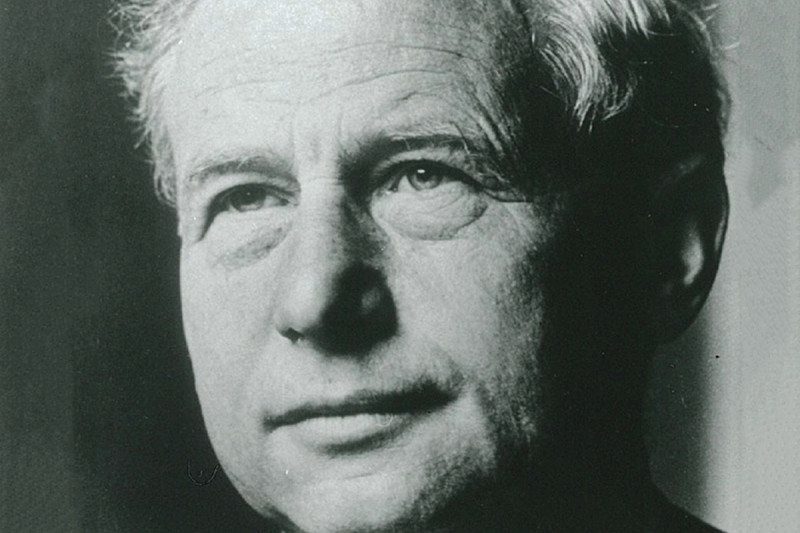
Maurice Pappworth was a "pestilential nuisance", according to his obituary. It was meant as a compliment. A whistle-blower before the modern meaning of the term was invented, he exposed how many of his fellow doctors in the 1960s, often at British teaching hospitals, were treating their patients with as much respect as lab rats, and sometimes killing them in the process.
In his explosive 1967 book, Human Guinea Pigs, he revealed how unsuspecting patients were being "subject to mental and physical distress which is in no way necessitated by, and has no connection with, the treatment of their disease". They were being sacrificed to science by "wolves in white coats", said one reviewer of his book. And not just in hospitals: in prisons, orphanages and psychiatric centres, too.
The book created headlines around the world, and Pappworth pulled no punches, likening the situation to the foul work of doctors in Nazi concentration camps. With the war so recent, this comparison inevitably whipped up outrage among his peers.
This was an era in which British doctors could seemingly do no wrong, and a TV series that featured real operations - Your Life in Their Hands - was top of the ratings. Yet Pappworth noted that many doctors had near contempt for both their patients and the notion of consent. As one researcher put it to him, it was "useless to explain to a charwoman what was going to be done, because she couldn't possibly understand".
In the wake of the trials of Nazi physicians at Nuremberg, judges proposed that doctors follow a Nuremberg Code, part of which was to elicit informed consent before people were used in experiments. British doctors had long resisted ethical codes in general and the Nuremberg Code in particular, so Pappworth took no prisoners: his book named names, accusing dozens of doctors of abusing their positions to carry out risky and sometimes lethal experiments. And he paid a price.
Pappworth had a backstory that was used to denigrate his motives, and paint him as bitter. He had been frustrated in his ambition to be a top consultant physician in London, and he was repeatedly blackballed from the routine award of a fellowship from the Royal College of Physicians in the years after passing his medical exams.
Why? Possibly because he was a Jewish Liverpudlian, born to Eastern European migrants, and had an "awkward personality" - as his late daughter Joanna Seldon noted in a recent biography, The Whistle-Blower. In the nepotistic world of 1950s medicine, he could barely have been more of an outsider. And anti-Semitism was widespread: he was told at one interview for a consultancy post that "no Jew could ever be a gentleman".
Thwarted by the establishment, Pappworth set up a practice in London's Harley Street, and took up sidelines such as teaching medical students and junior doctors. That's when he learned from his tutees how they were coerced into finding "volunteers" for their bosses' research projects, and that such patients often believed the research was part of their treatment and were rarely told what it involved.
Pappworth delved into medical journals and found that abuses were happening on a shocking scale, involving thousands of victims.
He wrote letters of protest to journal editors, but few were published. Easy to see why: some of the experiments were being carried out by those very editors. So he wrote Human Guinea Pigs, in which he catalogued more than 200 examples of abusive research published in the UK and US. Much of it was stomach-churning and defied any notion of consent or fulfilling the Hippocratic oath to "do no harm".
In one study, doctors reported boring holes into the skulls of 18 people who were in hospital for conditions unrelated to the research. They then inserted tubes to measure the effect on the brain of squeezing the veins in the subjects' necks, had them breathe carbon dioxide, subjected them to painful stimuli and injected acid into their bodies.
Sick babies were popular guinea pigs. In one study, 13 "mentally deficient" babies had catheters inserted into their hearts without sedation and were then fitted with face masks to deprive them of oxygen, simply to see how their bodies would respond. The paper reported them "crying strenuously".
Doctors injected unsuspecting people with malaria parasites, meningitis bacteria, live polio virus and live cancer cells. More than 40 people with diabetes, including children, had their insulin withheld so that they became comatose, after which samples of their liver and kidney were taken for analysis.
Human Guinea Pigs related all this in simple, brutal language, detailing the size of needles, for instance. He footnoted all the research, and helpfully listed the researchers in alphabetical order in the index.

Many publishers baulked at publishing his book. Correspondence at the Wellcome Trust Library in London includes a letter from lawyer Michael Rubinstein warning that "there is hardly any reference to a reported medical case [in the book] which would not constitute a grave libel upon the named doctors and hospitals". Only once did Pappworth back off. He noted that when eight people with peptic ulcers had large needles inserted into their abdominal aortas, thinking it was a treatment, three died as a direct result. Rubinstein said naming the experimenters could result in prosecutions for manslaughter. This story was, Pappworth wrote later, "the only one in which I did not name names". Among those he did name, no doctor or hospital ever sued him.
Perhaps worst of all, Pappworth knew he was only revealing the tip of the iceberg: he had reviewed just a few dozen of hundreds of medical journals. And in any case, he noted darkly, "the worst experiments go unrecorded".
Nor, when he was writing, had it emerged that for decades the US government's health services had followed a large group of African-Americans with syphilis, preventing them getting the standard penicillin treatment so as to further the study. Or that US hospitals were carrying out experiments for the Los Alamos nuclear lab, injecting plutonium into people with cancer to find what was a "safe" dose of radiation for those working on nuclear bombs.
Pappworth wasn't entirely on his own. He had collaborators and confidantes, including Harvard Medical School anaesthetist Henry Beecher, who published similar claims in the US, in more temperate language and without naming names. Beecher's work is better known today, especially in the US, but at the time his criticisms were shrugged off.
It was Pappworth's dredging that stirred up debate on both sides of the Atlantic. And in the end he largely won the argument. After much harrumphing about the curtailment of medical freedom, research hospitals in the UK and many elsewhere set up ethics committees to oversee their work. "It is hard to imagine that the current system of rigorous ethical review of research would be in place without Pappworth," according to Allan Gaw of the UK's National Institute for Health Research.
Comment: So it took a whistle blower with a conscience to effectively compel British society to act humanely in the field of medicine.
But as standards rise in the West, research that would be prohibited there springs up in poorer nations, where regulation is often lax or unenforced, and the population vulnerable. In recent decades, ethical abuses - especially by Western drug firms operating in parts of Africa or India - are myriad. The world needs more Pappworths. But they won't be thanked.
The medical establishment continued to bear a grudge against Pappworth. It was only in 1993, 57 years after he qualified for it - and a year before he died, aged 83 - that Pappworth was sufficiently forgiven to be made a fellow of the Royal College of Physicians. At the award ceremony, wrote Seldon, there was riotous applause as Pappworth shuffled up to collect his fellowship. It must have been a bittersweet moment for the pestilential nuisance.
This article appeared in print under the headline "Facing down the wolves in white coats"
Fred Pearce (born 30 December 1951) is an English author and journalist based in London. He is a science writer, reporting on the environment, popular science and development issues from 64 countries over the past 20 years. He specialises in global environmental issues, including water and climate change.
Pearce is currently the environment consultant of New Scientist magazine and a regular contributor to the British newspapers Daily Telegraph, The Guardian, The Independent, and Times Higher Education. He has also written for several US publications including Audubon, Foreign Policy, Popular Science, Seed, and Time.
Pearce has written a wide range of books on environment and development issues published in both the UK and US.




Comment: The scope of Nazi-style experiments documented from places around the world, and even in the most 'democratic' of nations, is shocking: